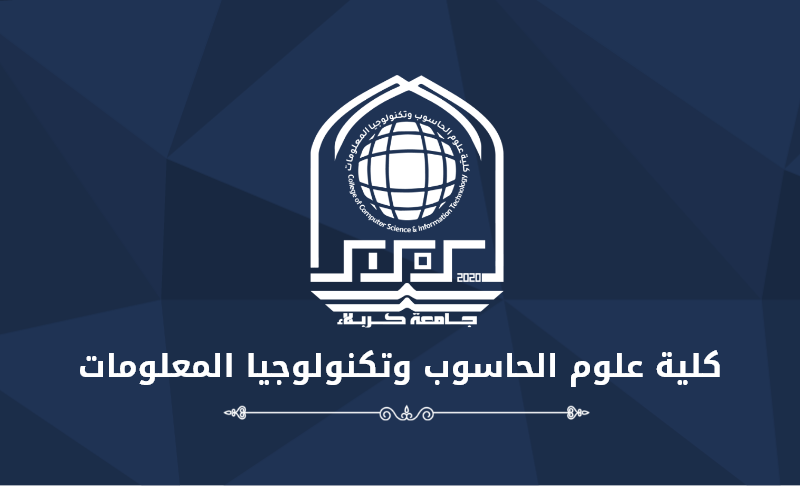عنوان الرسالة باللغة الانكيزية : Thermal Images Segmentation And Recognition Using Deep Learning Techniques
اسم الباحث : Haider Ali Muften
اسم المشرف : Assist. Prof. Dr. Ali Retha Hasoon
الملخص باللغة الانكليزية :
Thermal images play a crucial role in object detection for various applications, including surveillance, security, industrial automation, and vehicle navigation, as they can capture thermal signatures. However, challenges such as low contrast, fluctuating thermal patterns, and the absence of specific thermal datasets require specialized algorithms to accurately identify the object and its location. This research explores the field of object detection in thermal images, which is a vital aspect for applications such as surveillance and autonomous systems.
The images used are from Kaggle’s website, FLIR ADAS. We used it in two different ways for classification and segmentation models. This thesis used the Contrast Limited Adaptive Histogram Equalization (CLAHE) approach in image processing to improve contrast. This pre-processing phase attempts to enhance the performance of subsequent object recognition algorithms by addressing contrast related issues in thermal images
The first section of this study is to define a convolutional neural network model that can be used in classification situations. Using 2,956 thermal images, the study evaluates the accuracy, precision, F1 score, and recall of the MobileNetV2 and VGG19 architectures.
The results showed us that MobileNetV2 had an accuracy of 97% and F1 score of 96.8%, while VGG19 had an accuracy of 97% and an F1 score of 96.6%.
This study provides valuable insights into the application of transfer learning methods for thermal image classification and provides a comprehensive overview of the effectiveness of different algorithms in meeting the challenges posed by thermal imaging conditions.
In second section of this study, we take advantage of the YOLOv8 approach, which has been widely recognized for accurate real-time object detection, enhancing detection performance in the challenging region of thermal images. The technique was trained using a selected dataset contain 1898 images, of which 1,443 were used for training, 380 for validation, and 75 for testing. We used this approach to segment objects in thermal images. The average accuracy (mAP50) of 82% of the algorithm shows how effective it is. These results confirm that YOLOv8 is suitable for thermal imaging applications, which are new areas that require accurate object detection under extremely hot conditions.
عنوان الرسالة باللغة العربية : تجزئة الصور الحرارية والتعرف عليها باستخدام تقنيات التعلم العميق
اسم الباحث باللغة العربية : حيدر علي مفتن
اسم المشرف باللغة العربية : أ.م.د علي رضا حسون
الملخص باللغة العربية :
تلعب الصور الحرارية دورًا حاسمًا في اكتشاف الأشياء لمختلف التطبيقات، بما في ذلك المراقبة والأمن والأتمتة الصناعية وملاحة المركبات، حيث يمكنها التقاط التوقيعات الحرارية. ومع ذلك، فإن التحديات مثل التباين المنخفض، والأنماط الحرارية المتقلبة، وغياب مجموعات البيانات الحرارية المحددة تتطلب خوارزميات متخصصة لتحديد الكائن وموقعه بدقة. يستكشف هذا البحث مجال اكتشاف الأشياء في الصور الحرارية، وهو جانب حيوي لتطبيقات مثل المراقبة والأنظمة المستقلة.
استخدمت هذه الأطروحة منهج معادلة الرسم البياني التكيفي المحدود للتباين (CLAHE) في معالجة الصور لتحسين التباين. تحاول مرحلة ما قبل المعالجة هذه تحسين أداء خوارزميات التعرف على الكائنات اللاحقة من خلال معالجة المشكلات المتعلقة بالتباين في الصور الحرارية
القسم الأول من هذه الدراسة هو تحديد نموذج الشبكة العصبية التلافيفية الذي يمكن استخدامه في حالات التصنيف. باستخدام 2,956 صورة حرارية، قامت الدراسة بتقييم الدقة والدقة ودرجة F1 واستدعاء بنيات MobileNetV2 وVGG19.
أظهرت النتائج أن دقة MobileNetV2 بلغت 97% ودرجة F1 96.8%، في حين بلغت دقة VGG19 97% ودرجة F1 96.6%. توفر هذه الدراسة رؤى قيمة حول تطبيق طرق تعلم النقل لتصنيف الصور الحرارية وتوفر نظرة شاملة عن فعالية الخوارزميات المختلفة في مواجهة التحديات التي تطرحها ظروف التصوير الحراري.
في القسم الثاني من هذه الدراسة، نستفيد من نهج YOLOv8، الذي تم الاعتراف به على نطاق واسع للكشف الدقيق عن الكائنات في الوقت الفعلي، مما يعزز أداء الكشف في منطقة الصور الحرارية الصعبة. تم تدريب هذه التقنية باستخدام مجموعة بيانات مختارة تحتوي على 1,898 صورة، تم استخدام 1443 منها للتدريب، و380 للتحقق من الصحة، و75 للاختبار. استخدمنا هذا النهج لتقسيم الكائنات في الصور الحرارية. يُظهر متوسط دقة الخوارزمية (mAP50) البالغة 82% مدى فعاليتها. تؤكد هذه النتائج أن YOLOv8 مناسب لتطبيقات التصوير الحراري، وهي مناطق جديدة تتطلب اكتشافًا دقيقًا للأشياء في ظل ظروف شديدة الحرارة.




























































